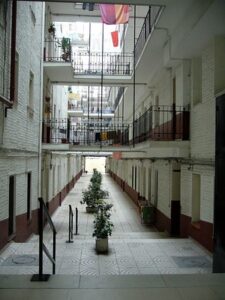You might think that the number of colleges and universities in the US stays relatively constant. You would be wrong. Between 2010-11 and 2020-21, the number of Title IV degree-granting institutions in the United States decreased by 14.5%. In 2020-21, there were 8.1% fewer four-year, degree-granting institutions in the US than there were in 2010-11. In that same time, the number of community colleges dropped by more than 25%.
That should set off some alarm bells among the nation’s community colleges. You might hope that private, for-profit colleges constituted most closures. Without doubt, there are fewer for-profit institutions today than there were a decade ago, but the shrinkage includes a decline of more than 6% among America’s publicly funded colleges and universities.
In a 2020 report, research firm EY Parthenon estimated that the “excess capacity” of US educational institutions may be as much as 25%. This translates into 3M-5M empty seats on college campuses. Here’s the bad news: in 2020, according to NCES, there were 19.4M students enrolled in US colleges and universities. By 2022, that number had dropped to 17.9M. If the capacity of the system in 2020 was at 75% with 19.4M students, the capacity today is closer to 66%. In short, the higher education system is currently overbuilt by 44%.
Certain colleges and universities haven’t experienced any significant change in their enrollment. Their perceived value is so high that their enrollment will likely never decline for the foreseeable future. But what happens to those schools whose perceived value is not as high?
Observers have been warning for years that non-selectivity is a risk factor for higher education institutions. Community colleges – who are rigidly non-selective have borne the brunt of enrollment losses in the last decade.
Community colleges need to evolve to survive
There is no simple fix for this; however, improving the perceived value of community colleges would be a good place to start.
Tuition cost ≠ perceived value.The per-credit-hour cost of tuition does not equate to perceived value. Or even value, for that matter. Perceived value is not ever about what buyers pay for their purchase, but rather, what the purchase returns. When a college degree entitles the earner to claim a job that does not pay a living wage, the perceived value of the degree (and the college that issued it) decreases.
Minimally, improving the perceived value means creating degree programs that enable students to train for careers (not jobs) that pay living wages.
Perceived value isn’t limited to students, either. A community rightly has certain expectations for a community college. Preparing students for employment and supporting economic development in the community come to mind. When a community college cannot (or will not) develop new educational programs that reflect shifts in the community’s economic development posture, the community college fails to return the expected value to the community.
Two kinds of jobs are in high demand: jobs that are not easily filled because they require specialized training and jobs that require little training and pay below-market wages. Community colleges need to focus on the former and stop wasting time (and taxpayers’ dollars) on the latter. There is literally no valid economic or public policy reason to train people for jobs that don’t provide a living wage. In Washtenaw County today, a living wage for one person with no dependents is $40,000 per year/$19.25 per hour.
Survival requires evolution. Community colleges that do not evolve will not survive.
Photo Credit: Connie Ma , via Wikimedia Commons












